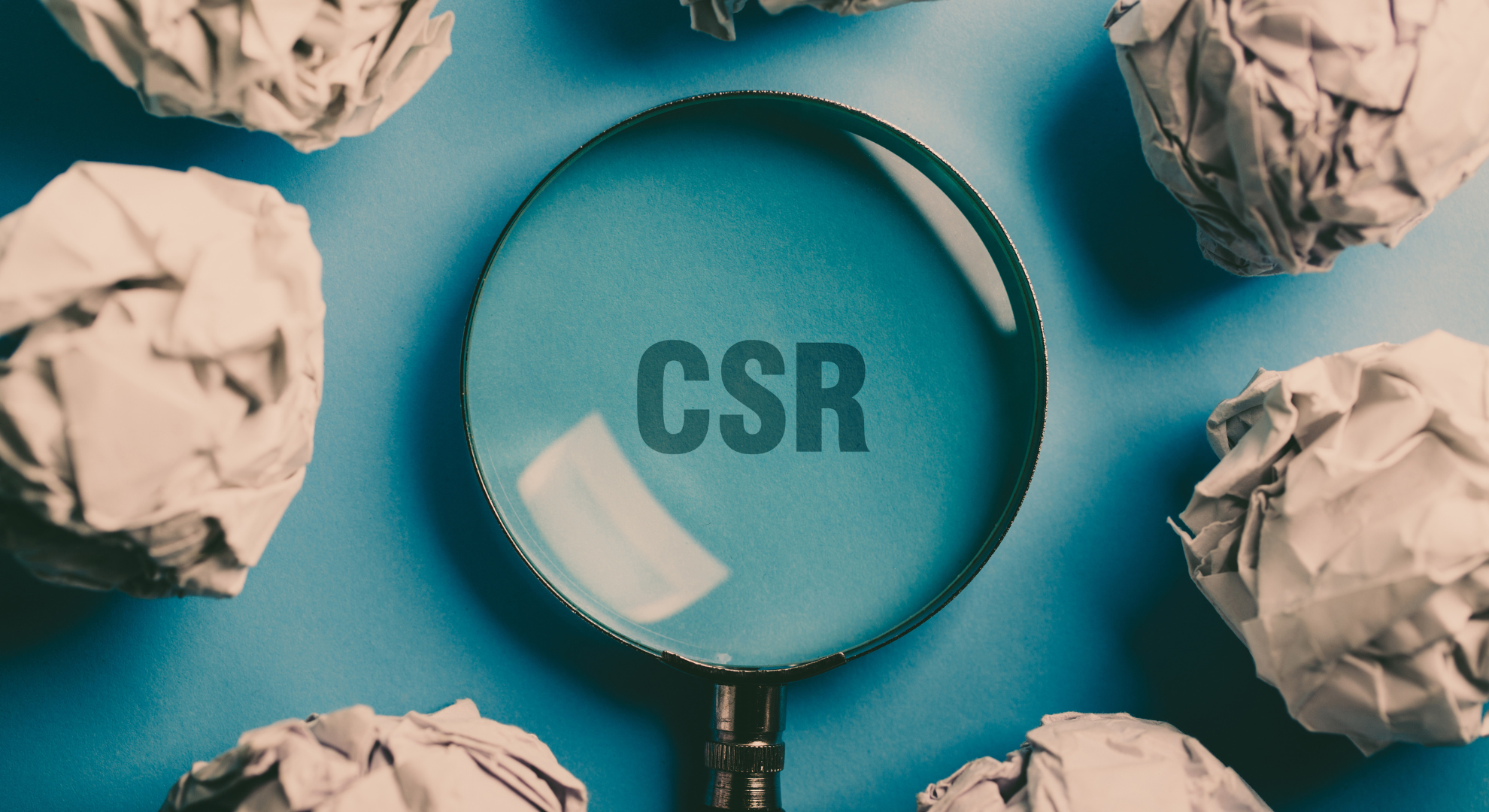GRI stands for Global Reporting Initiative, and is an international independent standards organization that promotes sustainability reporting through the development of global standards for corporate responsibility, including environmental, social and governance (ESG) reporting.
GRI Standards are designed to be accessible to any organization, regardless of size or sector. They can be used as part of a company’s annual reporting process, or they can be implemented as part of an organization’s continuous improvement program.
How do the GRI Standards work?
Methodology
The GRI Standards are a modular system comprised of three interconnected series of standards:
- The GRI Universal Standards, which are applicable to all organizations on a broad level;
- The GRI Sector Standards, which are applicable to specific sectors, and;
- The GRI Topic Standards, which are each dedicated to a particular topic and listing disclosures for that topic.
Altogether, the combination of these three standards ensures the versatility of the GRI Standards and provides flexibility for differing needs.
The Practical Guide to Sustainability Reporting Using GRI and SASB Standards notes that the GRI supports broad and comprehensive disclosures on organizational impacts, in contrast with the SASB’s focus on a subset of financially material issues.
Requirements
There are nine requirements for reporting in accordance with the GRI Standards.
If all requirements are not met fully, the organization issuing the sustainability information cannot claim that the information is in accordance with the GRI Standards.
Instead, they may indicate that the reported information was prepared with reference to the GRI Standards.
The GRI Universal Standards GRI 1 also provides guidance for the required procedures for ‘Reporting with reference to the GRI Standards.’
- Apply the reporting principles
- Report the disclosures in GRI General Disclosures 2021
- Determine material topics (Note that the GRI Standards adopts a double materiality approach—standards and frameworks sometimes differ in their definition of materiality)
- Report the disclosures in GRI 3: Material Topics 2021
- Report disclosures from the GRI Topic Standards for each material topic
- Provide reasons for omission for disclosures and requirements that the organization cannot comply with
- Publish a GRI content index
- Provide a statement of use
- Notify GRI
Key concepts and principles
The four key concepts for the GRI Standards are listed in the GRI 1: Foundation 2021 document:
- impact
- material topics
- due diligence
- stakeholders
The GRI Standards also identifies eight reporting principles that are essential for high-quality sustainability reporting. These principles, listed below, guide the quality and presentation of the reported information. Specific guidance on application of said principles is included in the GRI 1, as well as some suggested best practices for reporting.
- Accuracy
- Balance
- Clarity
- Comparability
- Completeness
- Sustainability context
- Timeliness
- Verifiability
Alignment with other frameworks and requirements
The GRI Standards are aligned with intergovernmental instruments, such as the UN Guiding Principles on Business and Human Rights, the ILO conventions, and the OECD Guidelines for Multinational Enterprises.
Thus, organizations can use the GRI Standards as a blueprint for applying the aforementioned instruments, as well as for reporting out on progress towards the UN Sustainable Development Goals (SDGs). GRI developed guidance SDG integration after the 2030 Agenda for Sustainable Development.
Moreover, the GRI Standards are compatible with standards, frameworks, and initiatives issued by other organizations.
This page links the 2016 version of the Universal Standards (not yet updated for the revised Universal Standards) with related sustainability initiatives such as the SDGs, the SASB Standards, BLab Impact Assessment, the Carbon Disclosure Project (CDP), and more.
Tools and resources
The GRI Standards offers a number of tools to support companies doing sustainability reporting.
Their website includes an FAQ for general questions, a GRI content index template, and an inventory of certified software partners by country, among other resources.
Moreover, as the GRI Standards are marketed as a free public good, the tools mentioned here are available on the GRI website at no cost (at this time, resources are mainly available in English).
GRI certification processes are also available to third party software or tool providers who want to be GRI-approved, along with a document on GRI’s pricing policy for certification.
Recognition
The GRI Standards are widely recognized in the sustainability field, as well as specifically incorporated into other third-party sustainability assessments, such as Ecovadis.
Thus, information that is gathered and presented in accordance with the GRI Standards will likely garner high sustainability ratings.
Who uses the GRI Standards, and why?
All organizations are eligible to use the GRI Standards. Due to the modular nature of the Standards, organizations of any size, sector, and public/private orientation can find relevant guidance and tailor it to their needs.
Individuals such as reporters, stakeholders, and other interested parties may also draw on the Standards for reference.
Benefits of using the Standards for for-profit companies
Potential benefits of using the GRI Standards are positive company reputation and increased stakeholder satisfaction.
For instance, a 2017 joint study by the Government & Accountability Institute and Baruch College/CUNY found that out of 572 total companies, the 481 companies that utilized the GRI Standards scored higher on information quality and degree of verification of ESG disclosure than the 91 counterparts who did not use the Standards.
Applying the GRI Standards to sustainability reporting also helps companies gain a deeper understanding of their material issues, as the Standards provide a blueprint for high-quality data collection and thorough reporting.
This understanding will aid companies in other endeavors, such as risk assessment and future projections.
Moreover, as ESG reporting becomes more commonplace in the private sector, many stakeholders (such as consumers, investors, and employees) are coming to expect some sort of formal sustainability reporting process as a matter of due diligence.
The Harvard Law School Forum on Corporate Governance reports that over 96% of 2021 Sustainability Reports included a letter from the CEO, signaling to stakeholders that ESG is a priority for senior leadership.
76% of 2021 Sustainability Reports were accompanied by a press release publicizing the data, and a majority of companies also included a materiality matrix in their reports to provide stakeholders with more detailed insight into the company’s sustainability strategy.
Given that the GRI Standards was the first globally accepted sustainability standard, it is a reliable starting point especially for companies that are looking to get started with sustainability reporting.
How to apply the GRI Standards
Process overview
The GRI reporting process is fairly open-ended in that GRI provides guidance and hard requirements via its Standards documents, but otherwise lets individual organizations determine the details of the process according to their needs.
The graphic is from the GRI Standards introduction document, and lays out the typical steps for reporting under the GRI Standards.
The GRI does not require an audit phase, and there is no set timeline for the assessment. The GSSB does set out a new work program (involving projects to review existing Standards and develop new ones) every three years to keep the GRI Standards up to date.
Thus, it is recommended that companies using the GRI Standards review and publish their data at least every few years—mostly in sustainability reports (whether associated with the GRI Standards or otherwise) are published annually, in any case. Reports must contain a GRI content index.
The content index makes reported information traceable and increases the report’s credibility and transparency.
GRI recommends that organizations report in accordance with the Standards, meaning that the organization reports on all its material topics and related impacts and how it manages these topics.
However, if this is not feasible, the organization can choose which content of the GRI Standards to apply and report with reference.
What changed in the 2021 revised Universal Standards?
The Universal Standards were revised following recommendations from the GRI Technical Committee on Human Rights Disclosure (a stakeholder group for labor-related disclosures).
The revisions were developed according to a set of mandatory requirements for standard development, and were overseen by the GSSB Due Process Oversight Committee and approved in July 2021.
The changes will officially come into effect on January 1, 2023, although GRI encourages earlier adoption when possible.
The main goals of the revision were to:
- incorporate mandatory human rights-related disclosures for all reporting organizations;
- integrate due diligence reporting;
- clarify GRI Standards key concepts, reporting principles and disclosures, ensuring that they align with recent developments in responsible business conduct;
- drive consistent application;
- encourage more relevant and comprehensive reporting;
- and improve the overall usability of the GRI Standards.
Ultimately, the revision led to several key changes, namely:
- setting expectations for responsible business conduct in intergovernmental instruments;
- consolidation of reporting approaches (there is now only one way to report in accordance with the GRI Standards, where previously GRI offered ‘Core’ and ‘Comprehensive’ options);
- key concepts for the foundation of sustainability reporting;
- a revised process for determining material issues;
- revisions to reporting principles, disclosures, as well as updates to structure/language of the Universal Standards, the GRI Standards system, and the addition of templates.
Options for facilitation and aid from third-parties
With apiday, it’s easier than ever to align your reporting with any ESG framework! Including GRI standards.
Our AI driven technology gathers all your sustainability data in one place and automates the reporting process: on the apiday platform, you’ll find a list of documents to share. Upload as many as you can find, and we’ll pre-fill your sustainability report wherever possible and provide you with a correspondence table.
While our experts provide you along the way with tailored ESG consulting support!
Save yourself time and hassle, give us a call and let apiday do the rest!
Related articles
Impact – What is Impact
The Corporate Sustainability Reporting Directive (CSRD) requires large businesses and SMEs to produce annual reports on their environmental and social impacts.
CSRD – What is CSRD
The Corporate Sustainability Reporting Directive (CSRD) requires large businesses and SMEs to produce annual reports on their environmental and social impacts.
Corporate Sustainability Reporting Directive: All you need to know
The Corporate Sustainability Reporting Directive is an EU regulation that will have a huge impact on how organisations report their environmental, social and governance (ESG) performance...
Sustainability – What is Sustainability
The GRI is an international independent standards organization and currently issues one of the most well-known standards for ESG reporting (GRI Standards).
Discover the latest Sustainability Recent Developments to improve your companies
Sustainability is a concept that evolves due to pressing sustainability challenges, worldwide issues, and its own concept limits. New concepts have emerged to think further and respond better to all the world’s current challenges...
GRI – What is the Global Reporting Initiative
The GRI is an international independent standards organization and currently issues one of the most well-known standards for ESG reporting (GRI Standards).
What is Materiality and Why it matters in business
Materiality is crucial for sustainability reporting because it allows companies to focus on the most important aspects of their sustainability efforts. A company can choose to report on all aspects of its sustainability program, but this would be extremely time-consuming and would probably not be very useful for investors and other stakeholders...
Materiality – What is Materiality
ESG is an acronym for Environmental, Social, and (Corporate) Governance. It refers to the non-financial factors of a corporation’s impact.
EcoVadis – What is EcoVadis rating
Created in 2007, EcoVadis provides a collaborative web-based rating platform for assessing the sustainability performance of organizations worldwide.
Impact-washing – What is Impact-washing
Impact washing can be defined as any marketing claim about a product/good/service/funds triggering a change in the real economy that cannot be supported by evidence.
ISO 26000 – What is ISO 26000
ESG is an acronym for Environmental, Social, and (Corporate) Governance. It refers to the non-financial factors of a corporation’s impact.
B Corp – What is B Corporation certification
ESG is an acronym for Environmental, Social, and (Corporate) Governance. It refers to the non-financial factors of a corporation’s impact.
The concept of impact on social and environmental issues and its implication for companies
Impact measurement is a powerful tool for companies to gauge their impact on social and environmental issues. In this article, we will discuss the concept of impact, its implications for organizations, and how it can be measured...
The most important and recent developments of ESG (Environmental, Social and Governance)
Being a B Corporation is not just about making profits and creating wealth for a company, it is a way of creating a more sustainable future for society! Discover our article about B corps and its benefits here...
The process for an enterprise to get the B corp certification
Becoming a B Corporation is an ambitious undertaking. This article will guide you through the steps required to become a B Corporation…
CSR – What is Corporate Social Responsibility
CSR is centered on the idea that businesses have a responsibility to benefit the society that they exist within—a broader view than the one that says businesses’ only responsibility is to produce economic profit.
What is a B Corporation: what this means and its benefits for companies
Being a B Corporation is not just about making profits and creating wealth for a company, it is a way of creating a more sustainable future for society! Discover our article about B corps and its benefits here...
The guide to EcoVadis certification: frequently asked questions
This guide will take you through the steps of the EcoVadis Certification process, and explain what is involved in becoming a certified business...
The implications of ISO 26000 for companies
ISO 26000 is a standard providing direction for the application of social responsibility to the activities of an organization. But what does this mean? And how can organizations use it to create better and more sustainable business practices? Let's talk about it…
What is the meaning of CSR (Corporate social responsibility) and how to adopt it?
A Corporate Social Responsibility strategy refers to an organization's active consideration of the effects its activities have on the environment, employees, customers, and suppliers. Let's look at how your company could adopt such a program...
ESG – What is Environmental, Social and Governance
ESG is an acronym for Environmental, Social, and (Corporate) Governance. It refers to the non-financial factors of a corporation’s impact.
4 reasons companies should adopt CSR, Corporate social responsibility
CSR is all about managing a company’s externalities while creating sustainable value for stakeholders and continuous innovation for the business. Let's break that down and explore why...
Carbon disclosure project reporting: what is it and how does it work?
Read our article about The Carbon Disclosure Project (CDP), an extra-financial questionnaire that collects data on companies’ environmental practices and performance...
What are the differences between Corporate Social Responsibility (CSR) and Environmental Social Governance (ESG)?
These terms are both used to describe an approach for businesses to integrate social and environmental factors into their governance policies, strategies, processes, and programs. Yet, they're not the same. Let's explore their key differences...
Why is ESG (Environmental, Social and Governance) important for a business
ESG (environmental, social and governance) can help businesses make sound decisions, and investors achieve better long-term returns. Let's discover how...













